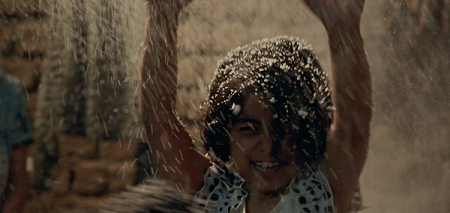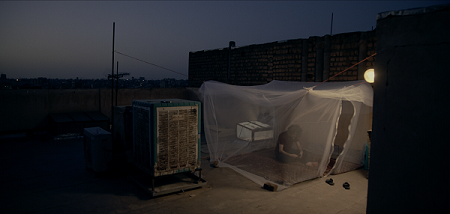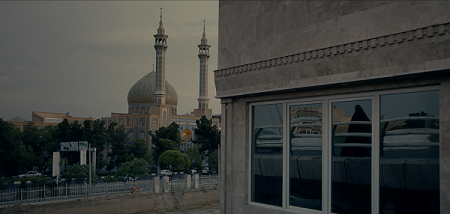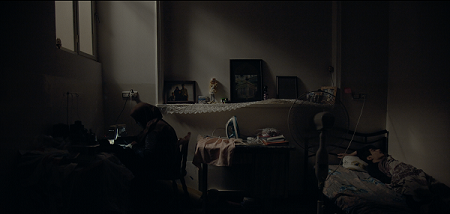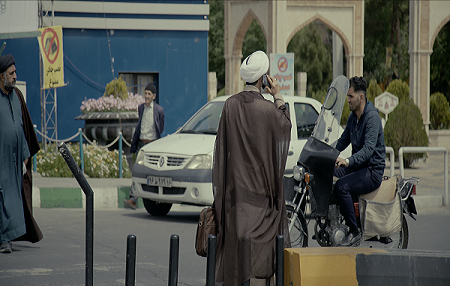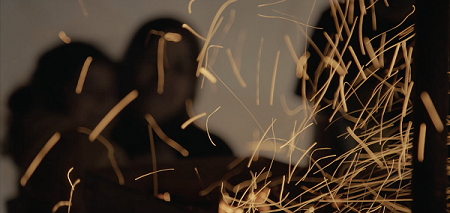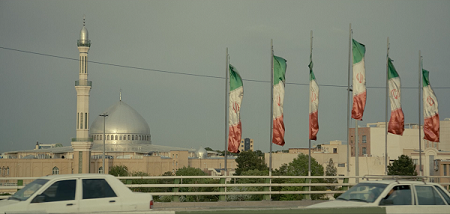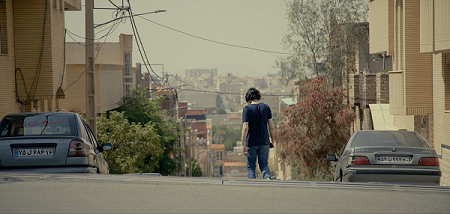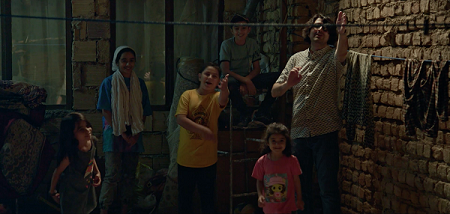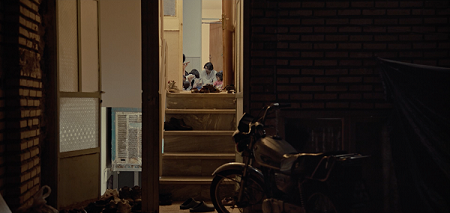[This article contains sensitive content that some readers may find distressing]
A new documentary titled “Can I hug you?” by the awardwinning director Elahe Esmaili and her husband Hossein Behboudirad — who produced the film — aims to highlight the sexual abuse of boys in Iran through Behboudirad’s own experience of abuse as a child. The documentary’s title describes the feeling of unease that people experience when trying to support victims of child sexual abuse (CSA).
[aesop_image img=”https://kayhanlife.com/wp-content/uploads/2023/09/E9C6342E-CF4A-4224-880E-7ADB7C36E429.jpg” panorama=”off” credit=”One World Media” align=”center” lightbox=”on” captionsrc=”custom” captionposition=”left” revealfx=”off” overlay_revealfx=”off”]
[aesop_image img=”https://kayhanlife.com/wp-content/uploads/2023/09/OWM-Primary-Logo-RGB.png” panorama=”off” credit=”/.” align=”center” lightbox=”on” captionsrc=”custom” captionposition=”left” revealfx=”off” overlay_revealfx=”off”]
Behboudirad said he was abused over a seven-year period from the age of five while growing up in the holy city of Qom, in Iran.
He was regularly raped by one man in the local community and was subjected to further rapes and assaults by at least four other men, with one of the men being a family friend. Behboudirad was able to stop the abuse at age 11 with the help of a teenager who gave him advice about how to prevent the assaults.
Behboudirad blamed himself for the abuse he suffered as a child, which affected his self-confidence and his ability to trust people as an adult.
“The abuse made me feel alone on many occasions in my childhood and also after my childhood. I kept thinking that I must be a weak person if I was finding it hard to do something simple in my daily life, like cook a meal,” Behboudirad told Kayhan Life. “I saw any failure as a sign of weakness. It was very hard for me, but I was reacting to what happened to me as a child.”
Behboudirad, who made the documentary with Esmaili after she convinced him the process would be healing, wanted to produce a film that would ensure other male victims of CSA had a platform to talk with each other about their experiences. The film is shot in Qom, where Behboudirad’s family live.
“For many years I wanted to see something about child sexual abuse and one of the reasons for this was because of the human rights restrictions we have in Iran. But it’s also a universal issue,” Behboudirad said. “We rarely see male victims in these conversations and movements. That lack of discussion for men made me feel alone too, because I couldn’t engage with anyone. So I decided we needed to make a film for every male victim who feels alone.”
The sexual abuse of boys and girls in Iran is heavily underreported, and knowledge about CSA is limited and inconsistent across the country.
A football coach is currently on trial in the capital city of Tehran for sexually abusing nine teenage boys, according to an Aug. 29 report by news outlet Iran Wire. The 40-year-old man, who has not been named, confessed that he had coerced the boys into engaging in sexual activity and had filmed the abuse.
In 2016, Saeed Toosi, a prominent Qur’an reciter and teacher, was accused by 16 boys aged between 12 and 13 of sexual abuse, including rape. The case caused an international outcry after it was closed by Iran’s judiciary, despite several victims’ requests to reopen the case.
Government officials have suggested incidents of CSA are rare. A spokesperson for the Chief Justice of Iran in 2018 said, “Child abuse and sexual abuse of children is not common in our country. Compared to Western countries, we have very few cases of abuse because of our cultural and religious characteristics.”
Research published in July 2022 by the University of Social Welfare and Rehabilitation Sciences in Tehran suggests that the prevalence of child abuse in Iran is estimated to be between 1.5 percent to 32.5 percent, while an estimated 25 percent of boys had suffered CSA in a secondary school in the city of Yazd.
Research by the World Health Organization (WHO) found that 1 in 13 men globally reported having been sexually abused as a child (0 to 17 years old).
The documentary was screened in London on Sep. 28, during the One World Media Global Reporting Summit, which brings together filmmakers, podcasters and journalists to explore ways to highlight underreported social issues and showcase impactful journalism. The documentary has also been submitted to this year’s Oscars awards for consideration.
Esmaili won Best International Short at the Hot Docs Canadian International Documentary Festival in 2021 for her film “The Doll,” about child marriage in Iran. Her work focuses on children’s and women’s rights.
“Can I hug you?” explores the extent to which boys in Iran are subjected to sexual abuse, and the Iranian regime’s reluctance to address the issue in government and wider society.
It also questions the effectiveness of the mandatory hijab in Iran as a measure to protect communities from sexual violence.
“Part of the problem in Iran is that we are not as careful about our boys as we are about our girls, and yet still this is happening to girls as well,” Behboudirad said. “However, because of the lack of attention to the abuse of boys, it is much easier for predators to get close to and exploit boys.”
The documentary, which was filmed in 2022 and took one year to make, required the production team to go through Iran’s arduous licensing process.
A scene in which the crew filmed a classroom while a teacher is explaining the importance of the mandatory hijab to male students required a permit before a female could enter the room. During the scene the male teacher tells the boys that Iran’s codes for living are “to assure safety and peace” and that “Hijab is the same. Women have to adhere to the dress code otherwise it creates the feeling of, say it, what?” One of the boys replies, “Terror and fear,” leading several boys in the class to erupt into laughter.
“’Terror and fear’ is a well known saying in Persian culture. In this context, it means some of the boys think what they are hearing is nonsense,’” Esmaili said.
Behboudirad added: “Many teenagers are now demonstrating against the mandatory hijab, even with indoctrination at school. The teachers tell the students that the hijab provides protection from sexual abuse, but many young people know this is not true, that this kind of safety does not exist in their society.”
Another scene in the documentary showed Behboudirad telling his parents about the abuse he suffered, at his parents’ home.
“I realized in that moment that my mother and father clearly understood that I was upset because of what happened to me, but the only thing my mother could do was ask my brother to fetch me a blanket,” Behboudirad said. “It wasn’t their fault that they had not been educated about how to support a victim. And there is a stigma and stereotypes attached to this form of abuse. From what I have observed, there is just no education about child sexual abuse in Iran.”
Behboudirad’s abuse has had a lasting impact on his life and his family. Behboudirad and Esmaili have relocated to five locations in three different countries, looking for somewhere Behboudirad feels is safe enough to bring up the children they hope to have one day.
“It was this idea of not feeling calm, not being settled within himself, not feeling safe in one city in general. Even now, we’re thinking about relocating to a different place,” Esmaili said. “And then I thought, maybe this is not a decision made from our own lives, but from the trauma. That’s the impact it’s had on both of us.”
On creating a documentary about a controversial topic in Iran, Behboudirad said: “Every documentary filmmaker who I know is worried about what the authorities will think about their film, how they might respond to it, whether we fill face going to prison, but this sis not stopping us.”

